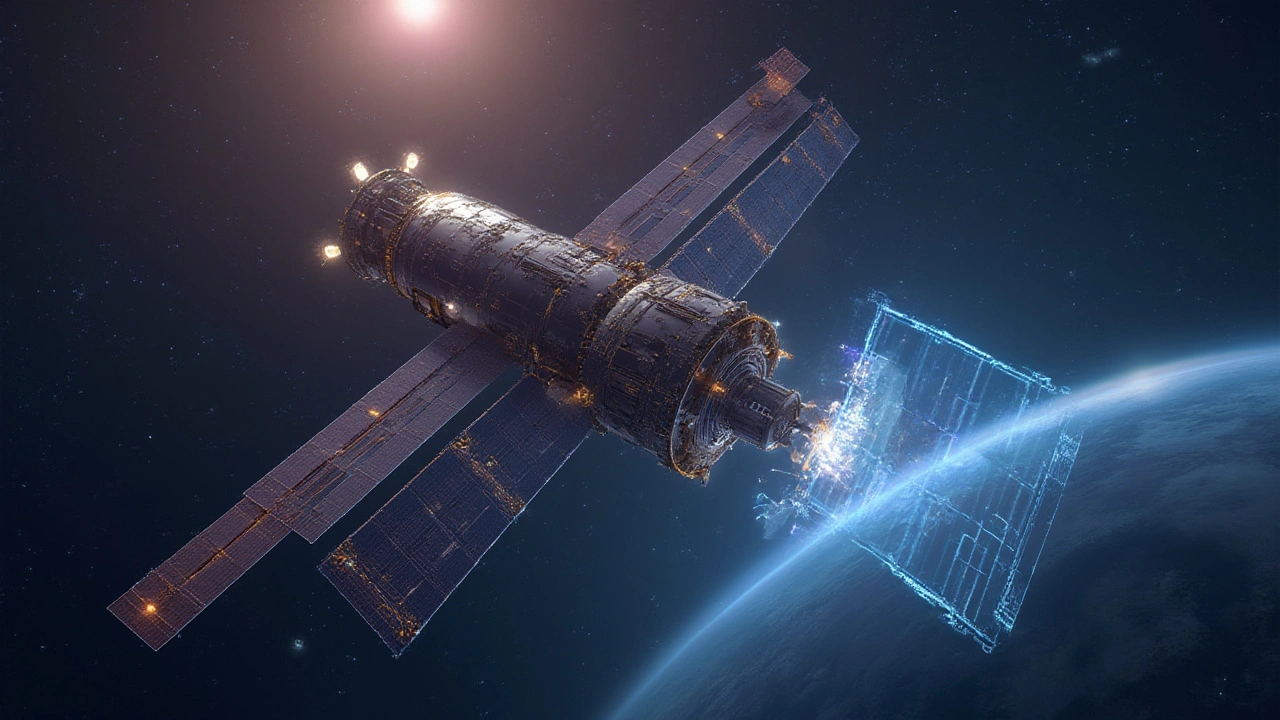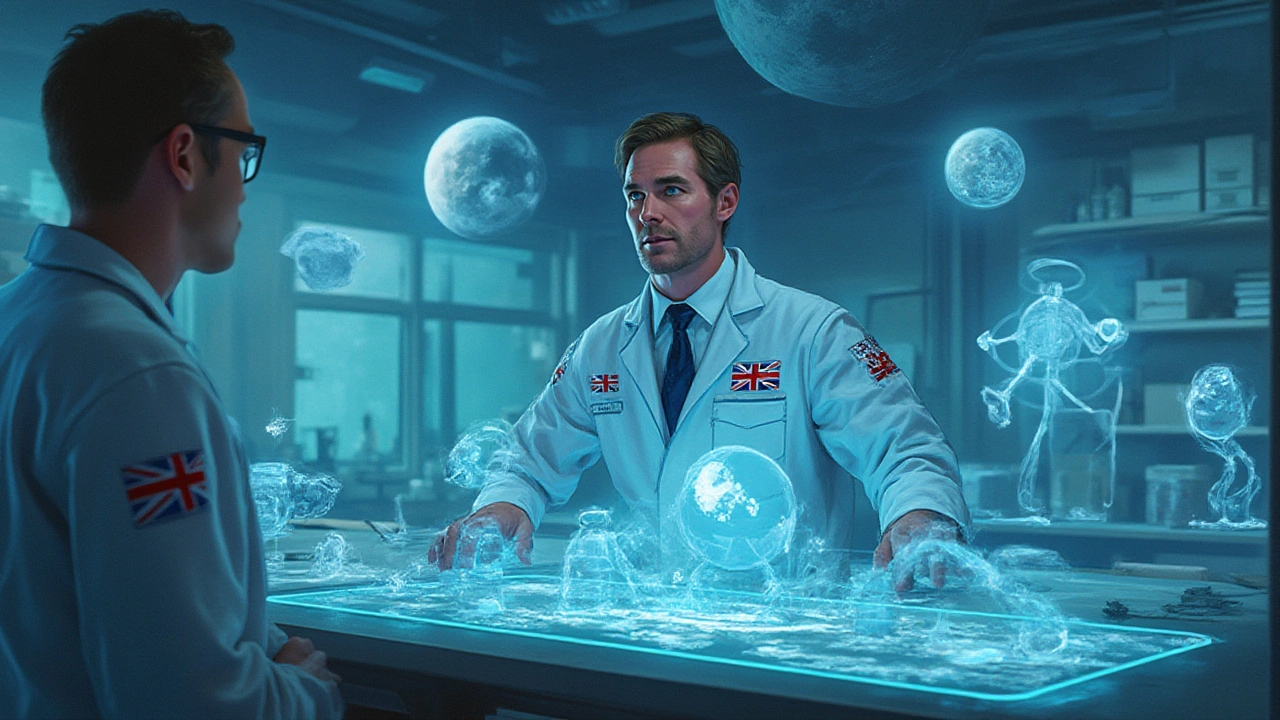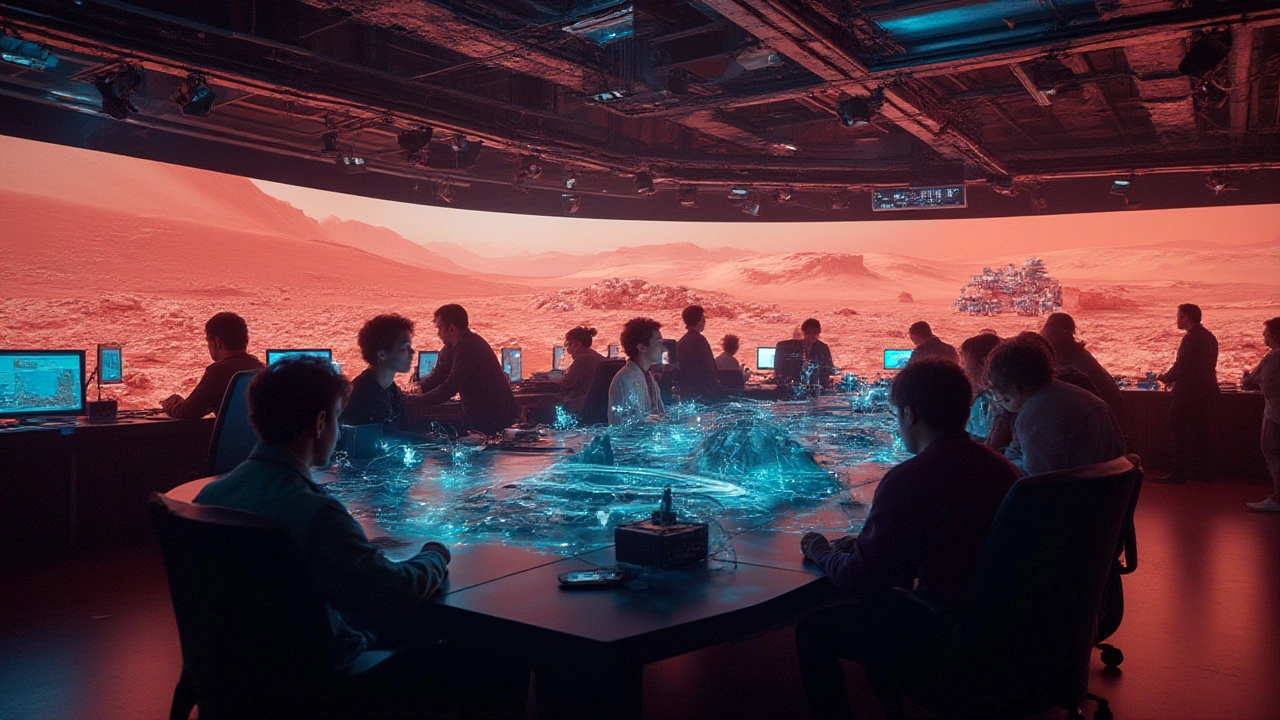Picture yourself on a windswept ridge, staring at the night sky. Imagine that just a handful of high-powered computers are actually running the show up there, far beyond Earth's atmosphere. We like to frame space exploration as a wild ride powered by daring astronauts, but the unsung hero in almost every mission is artificial intelligence. Machines make the right call when humans can't, whether a rover dodges a Martian boulder or a satellite tweaks its orbit at breakneck speed. You might be surprised to hear—AI makes crucial decisions a million times faster than you or me ever could. And with more than 100 missions currently talking to Earth at any given moment, space agencies everywhere rely on these smart systems to keep everything ticking.
The Heartbeat of Space Missions: AI at Work
Human control is slow when you’re 225 million kilometers away from a dusty rock called Mars—that’s about how far the Perseverance rover is from us on Wellington’s blustery hills today. Lag times mean waiting up to 20 minutes for commands just to reach a robot explorer, and then 20 more to hear back. Pause for a second and imagine playing a video game with controls that take almost an hour to react. That’s why NASA has handed the keys to AI. Instead of staring at a dirt path, Perseverance's brain—an AI called AEGIS—analyzes images, decides what rock to check, and snaps photos, all on its own. Not a single human hand is on the joystick.
The trend isn’t just on Mars, either. When the Hayabusa2 probe from Japan scooped up asteroid samples, AI systems charted out the best approach, adjusted thrusters, and kept everything stable in an environment where one wrong burn could send the probe spinning off forever. ESA’s Earth-observing satellites use AI algorithms to detect forest fires, measure crops, and even spot illegal fishing fleets faster than any team back on the ground.
AI is everywhere, running tasks that keep satellites from crashing, choosing which images to beam to Earth (`because bandwidth is always tight`), and spotting strange signals in oceans of static. And AI is about to become even more indispensable. NASA’s Artemis missions, for example, bank heavily on smart systems handling navigation, adjusting life support, and warning crews about potential hazards on the lunar surface. AI’s ability to learn and adapt on the go means missions will survive surprises that would otherwise spell disaster.

Smart Tools: Data, Discovery, and Decision-Making
Space is an endless data tsunami—think terabytes of images, sensor logs, wake-up pings, and more flooding in by the second. Processing this mass is beyond what any human team could sift through in months. Here’s where machine learning comes swinging in with its specialty: spotting what matters, fast. The Kepler Space Telescope, for example, churned out so much data on distant stars that even the most dedicated astronomers admitted defeat until AI came to the rescue.
Researchers built neural networks able to spot the subtle dimming of starlight when an exoplanet passes in front—a signal often hidden by cosmic noise. A 2017 experiment led by Google and University of Texas scientists dug into Kepler data using AI and snagged two exoplanets that everyone else missed. The feedback loop is wild: AI finds a pattern, flags it to scientists, the scientists train the AI on that pattern, and suddenly, everyone’s discovering whole new worlds.
Back here on Earth, AI takes in satellite images to track melting glaciers, watch Antarctic ice shift from space, and spot changes from volcanic eruptions or hurricanes. It crunches numbers to predict orbital debris collisions that could threaten everything from GPS satellites to the International Space Station. Here’s something tangible—NASA’s Collision Avoidance System uses AI to check tens of thousands of satellite orbits every day. Whenever there’s a risk of crash, it alerts operators, sometimes pushing a 'move now' notification with just hours' notice. If you like stats, have a peek at some recent data:
| AI System | Mission | Year | Tasks Managed |
|---|---|---|---|
| AEGIS | Mars Perseverance | 2021–present | Image analysis, navigation |
| Collision Avoidance | NASA Satellite Network | 2019–present | Real-time trajectory checks |
| Deep Learning Exoplanet Classifier | Kepler Telescope | 2017–present | Exoplanet detection |
| AI-based Image Filtering | ESA Earth Observation | 2022–present | Disaster prediction |
AI's reach goes deeper still. When China’s Chang’e 4 landed on the far side of the Moon—the first ever to manage it—the lander’s navigation depended on AI-enhanced hazard avoidance to pick a safe spot out of hundreds of dangerous craters. India’s Chandrayaan-3, which finally delivered a lander to the Moon’s south pole in 2023, used self-correcting code to ensure its robotic explorer stuck the landing, even with patchy communications. Without these _smart_ upgrades, every one of these missions would be a bigger gamble with higher stakes.

What’s Next: Overcoming Challenges and Dreaming Bigger
AI isn’t all smooth sailing. There’s trouble when a system can’t handle the unknown—space throws up unpredictable terrain, storms, or glitches; and an AI trained only on old data might miss something deadly. Sometimes, systems even get overloaded by cosmic radiation—a burst of solar wind can scramble software in a flash. Redundant backups help, but they don’t solve everything. That’s why researchers are focused on building “explainable AI”—the kind of software you can question and trust, a step up from black-box code that spits out answers nobody really understands.
Another sticky point? Ethics. Who’s responsible if an AI makes a snap call that costs millions—or even lives? As missions get further from Earth, crews and machines will have to rely on each other even more. NASA and the ESA are already running “human-in-the-loop” tests, where astronauts and AI work side by side in simulations, figuring out how to split authority and troubleshoot together. The next generation of AI, the experts say, will need to act as a partner, flagging its own uncertainties and explaining its choices.
Now, look ahead a decade or two. AI will run robotic mining bots on asteroids, steer supply ships to Mars, and manage vast off-world greenhouses growing food for lunar bases. Self-healing algorithms are in development: these will let probes fix their own code when bugs strike, instead of waiting for a signal from a blue planet millions of kilometers away. SpaceX and Blue Origin already run AI-managed spacecraft that can dock and land with almost zero human input. And space telescopes, smarter than ever, will pick out gravitational waves and track fast-fading supernovae before anyone on Earth can even blink.
For anyone dreaming of working in space science, here’s a tip: learn to collaborate with smart systems. Skills in coding, data analysis, robotics, and ethical problem solving will be the tools of tomorrow’s mission teams. Agencies like NASA hand out open datasets for people to practice on, and crowdsource solutions to some of space’s hardest problems. You don’t need a PhD to dive in—students and hobbyists have already helped train AI to classify galaxies and spot dangerous space rocks.
As we scan the skies for the next big find, it’s clear that humans aren’t exploring space alone. We’ve got code on our side—a silent partner making sense of the cosmos, helping humanity leap beyond what we ever thought possible. Every rover, every probe, every flash of data from the stars is a story of people, machines, and the power of artificial intelligence working in lockstep, rewriting the limits of discovery.

